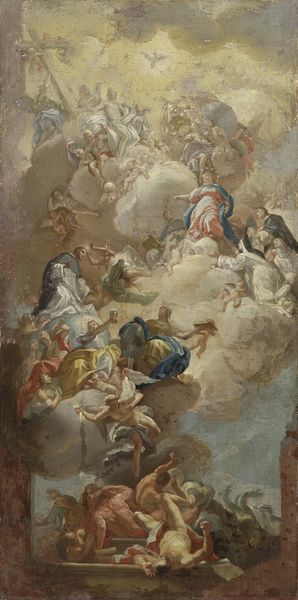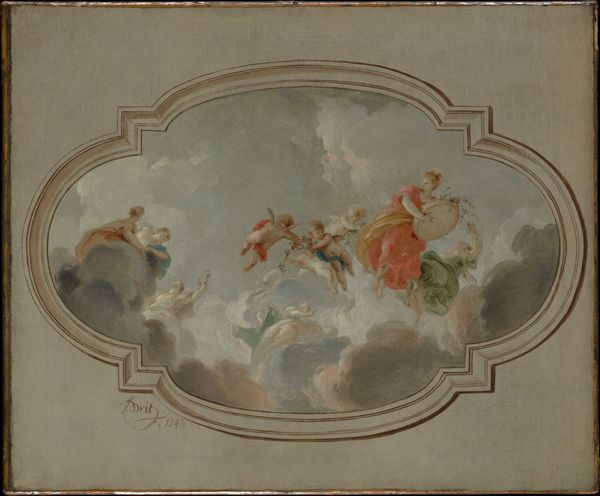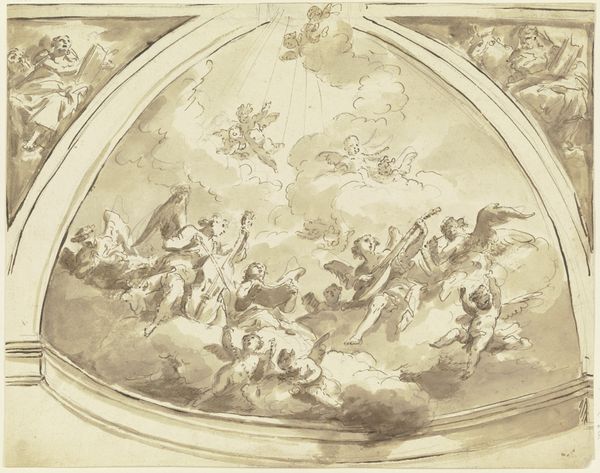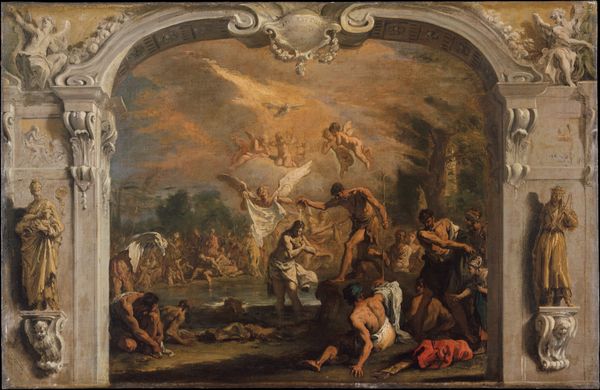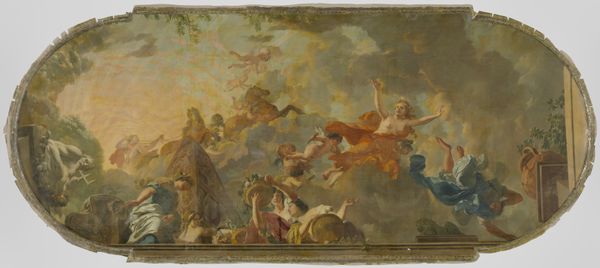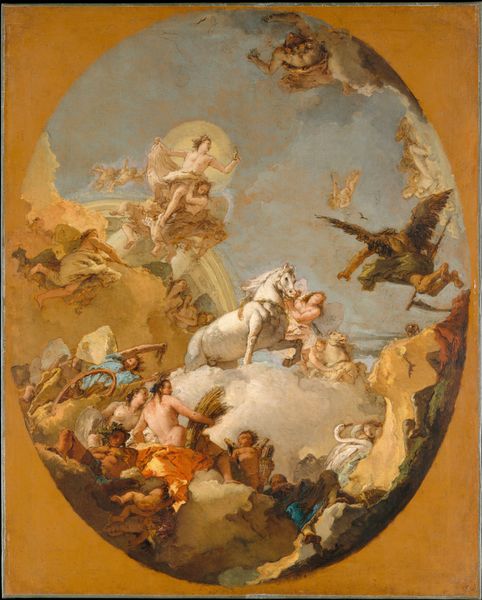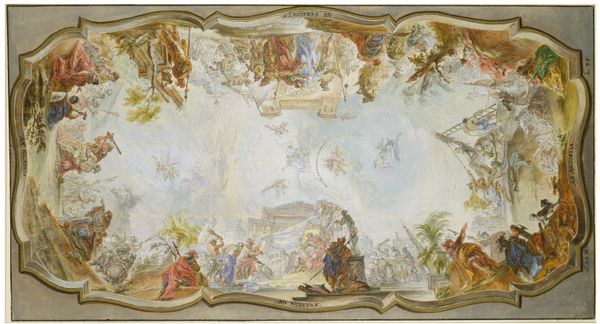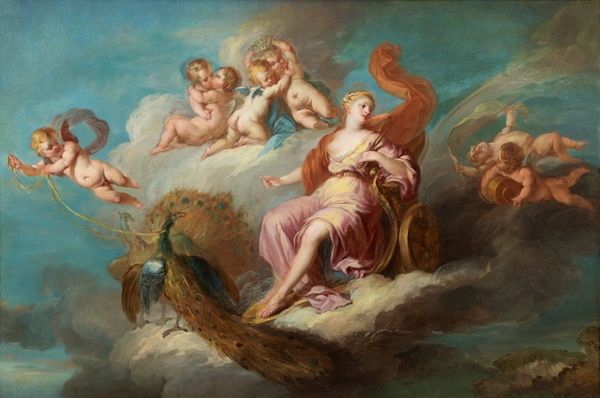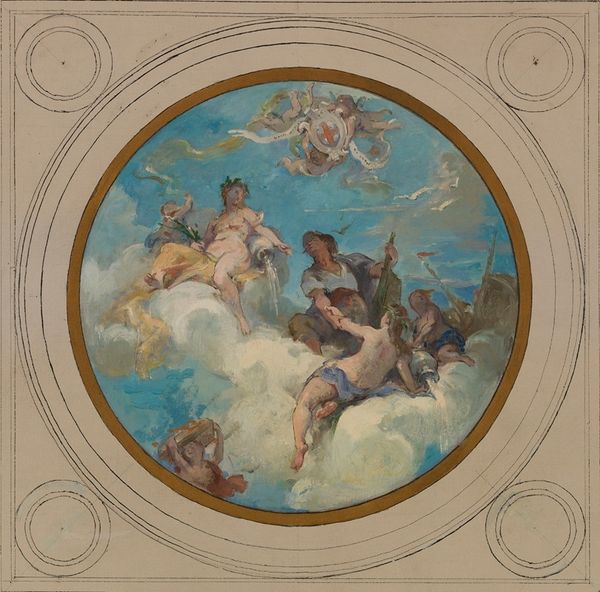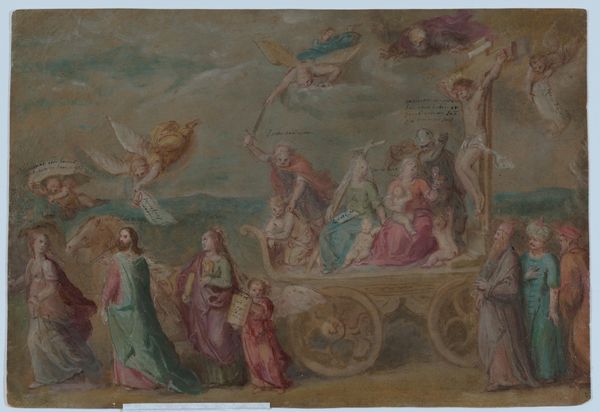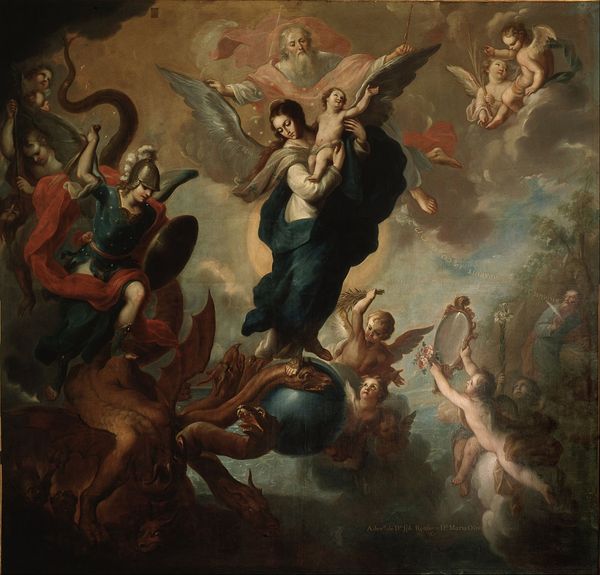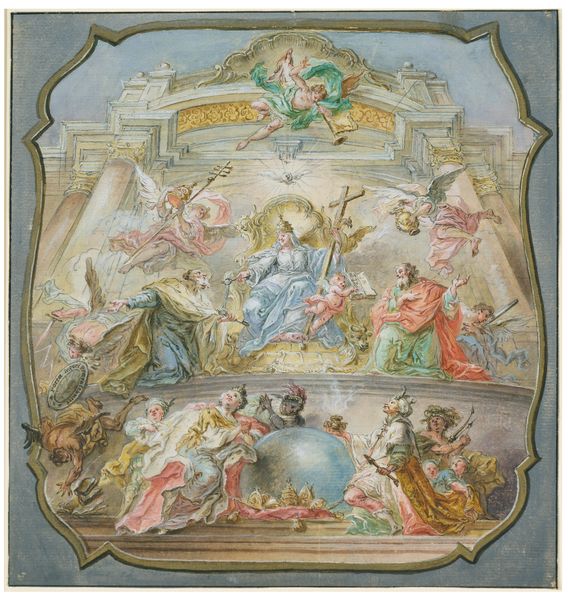
painting, oil-paint
#
allegory
#
baroque
#
painting
#
oil-paint
#
figuration
#
oil painting
#
history-painting
Dimensions: 18 7/8 x 23 1/4 in. (47.9 x 59.1 cm)
Copyright: Public Domain
Curator: Up next, we have Jacob de Wit's "Allegory of the Arts," painted in 1742 and rendered in oil paint. It’s currently part of the Metropolitan Museum of Art's collection. Editor: Immediately, I'm struck by the painting's dreamy, ethereal quality. It feels almost weightless, like looking up into clouds filled with figures. Curator: De Wit was a master of this airy style, deeply rooted in Baroque conventions. He specialized in what were known as "zolderstukken," or attic pieces—paintings designed to look like three-dimensional sculptures adorning ceilings and walls. They reflect a very specific desire of wealthy patrons to use artworks as symbols of cultural status. Editor: The cloud imagery itself feels potent, recalling earlier heavenly ascensions. I see putti, mythical figures…are they intended to carry specific symbolic weight related to the Arts, given the title? Curator: Precisely. Each element carefully chosen: instruments representing music, drafting tools for architecture, and so on. It’s about celebrating the arts as embodiments of a refined and sophisticated culture—a world almost exclusively available to the aristocracy and rising merchant classes. Editor: So it's about legitimizing power and reinforcing a social order? These kinds of images often paper over less palatable aspects of history with beautiful visuals. The softness in the pastel tones does little to erase this purpose from my mind. Curator: That’s absolutely an essential layer of the piece. Consider how art patronage, then and now, often ties into the exercise of influence. While de Wit was doubtlessly a talented painter, these types of allegories become especially charged when you understand them as vehicles of social affirmation. Editor: Recognizing these contexts, I look for those little threads and visual continuities that tie us back to the symbolism inherent within each age. What symbols continue to be read differently and which ones we understand in much the same manner. It speaks to art's endurance. Curator: A perfect way to encapsulate a great and potentially uncomfortable conversation sparked by art of this era! Editor: Indeed. It is in such art that cultural history shows its complexity and asks us questions.
Comments
No comments
Be the first to comment and join the conversation on the ultimate creative platform.
